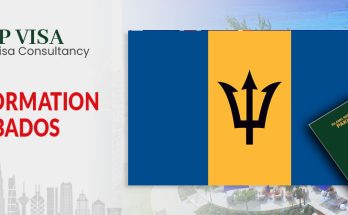Complete Guide to the Italy Visit Visa Process
Italy, with its rich cultural heritage, stunning landscapes, and vibrant cities, is a popular destination for tourists, business travelers, and those visiting friends or family. To visit Italy, you generally need a Schengen visa, which allows travel to Italy and other Schengen Area countries. Here’s a detailed guide to the Italy visit visa process.
1. Types of Italy Visit Visas
Italy offers various types of Schengen visit visas depending on the purpose and duration of your stay:
- Tourist Visa: For leisure travel, sightseeing, or vacation.
- Business Visa: For business-related visits such as meetings, conferences, or negotiations.
- Family or Friend Visit Visa: For visiting family members or friends residing in Italy.
- Transit Visa: For travelers passing through Italy en route to another Schengen country. Valid for up to 24 hours.
2. Eligibility Criteria
To be eligible for an Italy visit visa, you must meet the following requirements:
- Passport Validity: Your passport should be valid for at least 3 months beyond your planned departure date from the Schengen Area and have at least two blank pages.
- Purpose of Visit: Clearly state the purpose of your visit and provide relevant documentation.
- Financial Means: Demonstrate that you have sufficient funds to cover your stay and return journey.
- Ties to Home Country: Provide evidence of strong ties to your home country, such as employment, family, or property, to ensure you will return after your visit.
3. Documents Required
The documents required for an Italy visit visa typically include:
- Visa Application Form: Complete and sign Form Schengen Visa Application. You can find the form on the Italy Visa Information website.
- Passport: Original passport with at least 3 months validity beyond your planned departure from the Schengen Area and one passport-sized photograph.
- Photographs: Two recent passport-sized photographs meeting Schengen visa photo requirements.
- Visa Fee: The fee for a short-stay Schengen visa is approximately €80 for adults and €40 for children aged 6 to 12. Children under 6 years are usually exempt.
- Travel Insurance: Proof of travel insurance covering at least €30,000 for medical emergencies and repatriation. The insurance must be valid throughout the Schengen Area.
- Proof of Accommodation: Hotel booking confirmation or an invitation letter from a host in Italy. For family or friends, include a formal invitation letter and a copy of the host’s residence permit or passport.
- Proof of Financial Means: Recent bank statements, pay slips, or proof of income. If sponsored, provide the sponsor’s financial documents.
- Travel Itinerary: Details of your travel plans, including flight reservations and accommodation.
- Additional Documents: Depending on the purpose of your visit, additional documents may be required, such as a letter of invitation for family visits or a business invitation letter for business trips.
4. Application Process
- Determine the Relevant Embassy or Consulate: Apply through the Italian embassy or consulate in your home country, or through a Visa Application Center (VAC) if available.
- Complete the Application Form: Fill out Form Schengen Visa Application online or obtain it from the Italian consulate’s website.
- Pay the Visa Fee: Pay the visa fee online or at the VAC as per instructions. Keep the payment receipt as proof.
- Schedule an Appointment: Book an appointment for your visa interview and biometrics (if required) at the nearest Italian consulate or VAC.
- Attend the Appointment: Submit your application, supporting documents, and biometric data (photographs and fingerprints) at the appointment.
- Visa Processing Time: Processing times typically take about 15 calendar days. It may be longer during peak periods or if additional documentation is needed.
5. Visa Issuance
- Receive Your Visa: If approved, your visa will be stamped in your passport. You will be informed how to collect your passport or it may be mailed to you.
- Verify Details: Ensure that all details on the visa are correct, including your name, visa type, and validity dates.
6. Arrival in Italy
- Border Control: Present your passport and visa to Italian border control officers. Be prepared to answer questions about your travel plans and provide any additional documentation if requested.
- Entry Stamp: Your passport will be stamped with the date of entry and the duration of your stay.
7. Extending Your Visa
- Visa Extension: If you need to extend your stay beyond the visa’s validity, you must apply for an extension at the local immigration office in Italy. Extensions are granted under exceptional circumstances and may require additional documentation.
8. Important Tips
- Apply Early: Apply for your visa as early as possible, ideally 3 to 6 months before your planned travel date.
- Accurate Information: Provide accurate and truthful information throughout the application process and during the visa interview.
- Health Insurance: Ensure your travel insurance meets Schengen requirements for medical emergencies.
9. Useful Contacts
- Italian Ministry of Foreign Affairs: Website
- Italian Embassy or Consulate: Locate your nearest Italian embassy or consulate for specific instructions and requirements.
By following this guide, you’ll be well-prepared to navigate the Italy visit visa process and enjoy your visit to one of Europe’s most beautiful and culturally rich countries.





I don’t think the title of your article matches the content lol. Just kidding, mainly because I had some doubts after reading the article.
Thanks for sharing. I read many of your blog posts, cool, your blog is very good.